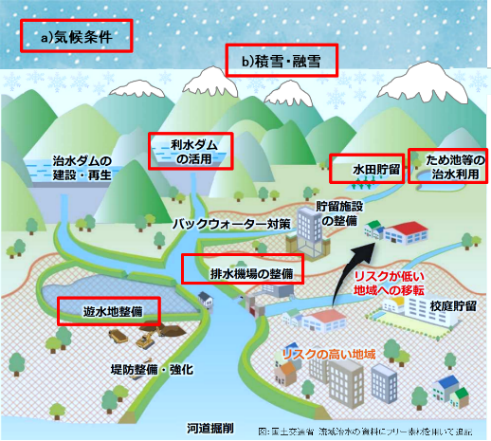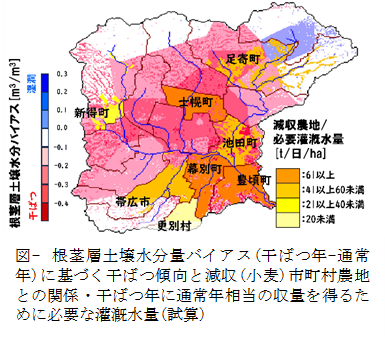There is no doubt that global warming is causing climate change, and rainfall events are anticipated to become more extreme, resulting in more severe flood and drought damage. In response, the Ministry of Land, Infrastructure, Transport and Tourism in Japan has updated design rainfall based on future projections, announced a shift towards “basin-wide flood management,” and established related laws. As a basis for setting an appropriate design rainfall, they analyzed d2PDF, a large-scale climate prediction dataset, and estimated that the rainfall under future climate will be 1.1 times the rainfall under current climate across Japan, except the Hokkaido region. Given that the impact of climate change on extreme phenomena such as heavy rain is likely to vary geographically and topographically, it is crucial to further improve methods for projecting future rainfall. In the meantime, basin-wide flood management expects various entities in the basin to participate in the project, for example, by implementing small-scale rainfall storage and infiltration measures. For their efforts to continue sustainably, it is essential to integrate and evaluate them as part of the basin-wide effort and visualize their contribution to the goal.

(1) To analyze rainfall characteristics, such as the scale of heavy rainfall, considering regional characteristics, and present the regional distribution of each rainfall characteristic.
(2) To develop components to predict future water-related hazards considering urban drainage and basin-wide flood control measures and construct a system to support public and private entities in planning basin-wide flood management. The system will be developed using the WEB-RRI and RRI models developed at ICHARM as the core models.
Professor Honma of Tohoku University in incorporating a rice-plant growth model into the proposed system.
FY2022-FY2027
| Chief Researcher | KUBOTA Keijiro |
| Senior Researchers | USHIYAMA Tomoki, Mohamed Rasmy Abdul Wahid, TANAKA Yozo |
| Research Specialists | Ralph Allen Acierto, TAMAKAWA Katsunori, TSUTSUI Hiroyuki |
To develop analytical components that can simulate water-related hazards, we applied the WEB-RRI model to the Tokachi River basin, where a drought occurred in 2021, and investigated a drought trend based on the root zone soil moisture content bias, which is calculated by subtracting the root zone soil moisture in the normal year from the root zone soil moisture in the drought year. The results show that the drought trend area almost matches the eight municipalities where the wheat yield decreased in 2021. We also performed test calculations using the WEB-RRI model to estimate how much irrigation water would have been needed in addition to the rainfall that the study area received for the eight municipalities to secure the normal-year wheat yield in 2021. The calculations using the root zone soil moisture content as the indicator found that they would have needed about 51 tons per day of irrigation water. These findings suggest that national irrigation projects should be expanded to the eight municipalities as they have been conducted since several decades ago in other parts of the Tokachi River basin.
